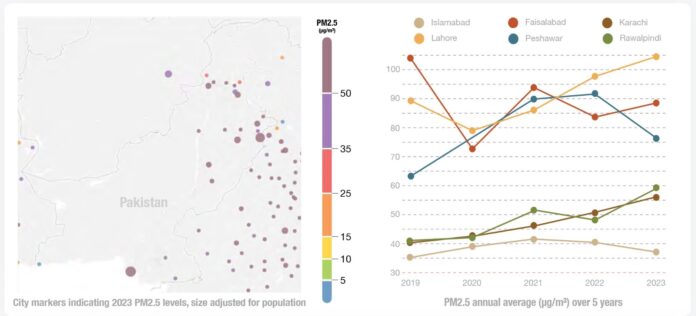Pakistan, like many South Asian countries, is grappling with a severe pollution crisis, particularly concerning air quality. In 2023, the country ranked second globally for poor air quality, with an average PM2.5 concentration of 73.7 micrograms per cubic meter, as reported by IQAir, a Swiss air quality technology company. This alarming level far exceeds the World Health Organization’s recommended limit of 5 micrograms per cubic meter for PM2.5 particles.
The capital city, Islamabad, experienced its highest-ever PM2.5 levels at 42.4 micrograms per cubic meter. Lahore, notorious for being the most polluted city in the world in March 2023, saw its PM2.5 levels soar to 99.5 micrograms per cubic meter, with a monthly average reaching a staggering 251 micrograms per cubic meter in November, prompting the government to declare a “smog emergency.”The air quality crisis extends beyond Lahore, with cities like Faisalabad, Karachi, Peshawar, and Rawalpindi also recording dangerously high PM2.5 levels, significantly surpassing WHO guidelines. Various factors contribute to this hazardous situation, including crop burning, deforestation, industrial and vehicle emissions, and smoke from brick kilns.
In response to the dire situation, the government implemented lockdowns in multiple cities in Punjab due to thick smog. In a groundbreaking move, Lahore witnessed the country’s first artificial rain in December 2023, where planes equipped with cloud-seeding technology were deployed to combat the severe air pollution levels.
Pakistan’s struggle with air pollution is only surpassed by Bangladesh, with an average PM2.5 level of 79.9 micrograms per cubic meter. India follows closely behind with 54.4 micrograms per cubic meter of PM2.5 particles.


